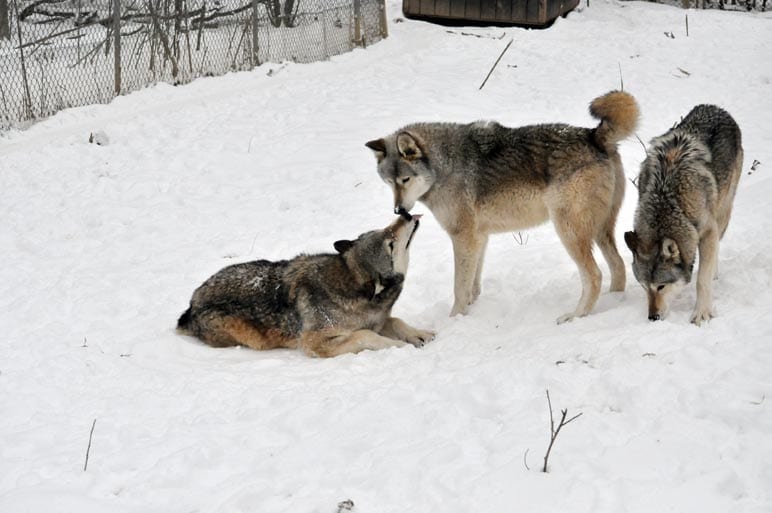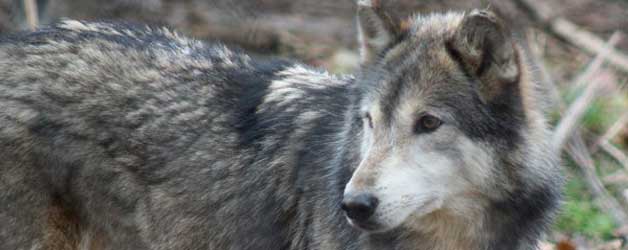Gray wolves in North America have faced many challenges with human populations. In the early 1900’s in North America, they were driven to near extinction due to habitat destruction and over-hunting. It took many decades, but over the course of the century following their extirpation (local extinction), perspectives about wolves slowly began to change. In […]
Category Archives: Wolf Education
Lisa Matthews / Wolf Song of Alaska / Volunteer The wolf in North America, is a predator of primarily large ungulates, that is, animals like moose, elk, and deer. All biological and social aspects of the wolf make it adapted for this role. No other carnivore in the western United States replaces the ecological importance […]
You may have heard on the tours that wolves have an excellent sense of smell. They are often able to detect a herd that is miles away just by picking up their scent in the air! But how does this work exactly? In mammals, the sense of smell depends on the function and number of […]
A sanctuary is a place to seek refuge. An animal sanctuary is a facility where animals are brought to live and be protected for the rest of their lives. Unlike animal shelters, sanctuaries do not seek to place animals with individuals or groups, instead maintaining each animal until his or her death. Wildlife rehabilitation is […]
Red Wolves were reintroduced to North Carolina several years ago. Since their reintroduction they have faced many troubles one of the biggest is hunters mistaking them for coyotes (which are always in season) and shooting them. Recently the North Carolina courts put a 6 month moratorium on coyote hunting in the five counties the red wolves call […]
News of Mexican Grays The Arizona lawmakers recently passed two laws limiting the protections for the Mexican Grays or Lobos, fortunately the governor of Arizona has vetoed these bills. As of March of 2014 there are believed to be 14 wild packs of Mexican Grays. Throughout the country various zoos and conservation organization host a […]
Here is an interesting tidbit; you could be camping in the wild and have wolves very near without knowing they are present. This is the case because among themselves, wolves use body language as the main source of communication with each other. Over time, wolves have developed very clear postures and behaviors because this body […]
The truth is that the howl has contributed to the bad rap that wolves have obtained over the years. In the wild, howling is the wolves’ universe and it is involved in every aspect of their lives. For the most part wolves howl because it is the glue that physically binds the pack together. It […]
The gray wolf was once found through most of North America. But by the time the Endangered Species Act became law in 1973, the wolf was gone from the Rocky Mountains, having been exterminated by shooting, tapping and poisoning. Over the past 30 years, the ESA has helped increase wolf numbers in the Northern Rockies. […]
Full Moon names date back to Native Americans, of what is now the northern and eastern United States. The tribes kept track of the seasons by giving distinctive names to each recurring full Moon. Their names were applied to the entire month in which each occurred. There was some variation in the Moon names, but […]
- 1
- 2



